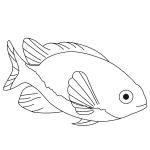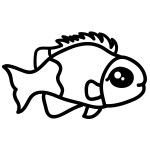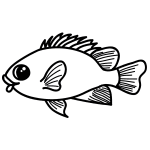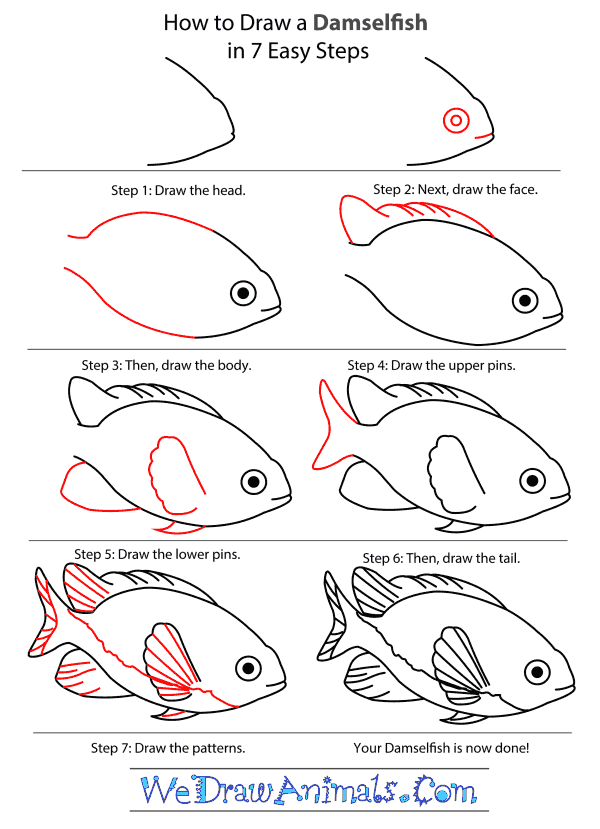In this quick tutorial you'll learn how to draw a Damselfish in 7 easy steps - great for kids and novice artists.
The images above represent how your finished drawing is going to look and the steps involved.
Below are the individual steps - you can click on each one for a High Resolution printable PDF version.
At the bottom you can read some interesting facts about the Damselfish.
Make sure you also check out any of the hundreds of drawing tutorials grouped by category.
How to Draw a Damselfish - Step-by-Step Tutorial
Step 1: Start by drawing the head. It is a very wide sideways "V" with some small bumps at the tip.
Step 2: Draw a small straight line at the tip of the head. This makes the mouth line. In the middle of the head draw a round eye. Draw another larger circle around the eye.
Step 3: Continue the top head line to the left and up. Then it curves down and has a sharp bend to the left just at the end. Draw the bottom head line to the left. Curve it up and bring it up almost to the top body line.
Step 4: On top of the top body line make the upper fin. Start just above the eye and draw a long curvy line along the top body line. Make it very bumpy. At the back of the fin is a very large bump. Join the fin line with the back of the body line.
Step 5: At the end of the lower body line draw a half circle to make the back lower fin. Just to the right of that along the bottom of the body line draw a sharp triangle shaped fin. Just above that sharp fin draw an oval shaped fin. Make the left side of the fin very bumpy and the right side very straight.
Step 6: Next draw the tail. Continue the top body line up to the left. Continue the bottom body line down to the left. Curve these two line together to make a two-pointed tail.
Step 7: Finally draw the body patterns. There are long lines along all of the fins and the tail. Draw a squiggly line from the tail to just under the eye.
Interesting Facts about the DAMSELFISH
The Damselfish is a member of the fish group and the scientific term for them is Chrysiptera sp. nov. The Greek name “Chrysi-ptera” in English means “golden-fin.” The abbreviated name “sp. nov.” means “species novus.” The Latin word “novus” in English means “new.” According to the International Commission on Zoological Nomenclature, any animal that is discovered after 1999 is considered to be “new.”
Did you know?
- This species category was first documented in 1839.
- The species Chrysiptera albata was first discovered in 2002.
- The species Chrysiptera chrysocephala was first discovered in 2002.
- The species Chrysiptera giti was first discovered in 2008.
- The species Chrysiptera arnazae was first discovered in 2010.
These related species have many things in common. They all live in the Pacific Ocean of tropical climates near island reefs within 180 feet from the surface, where they apparently eat zooplankton. Also, there is distinct pairing during breeding, and males guard the eggs. Some minor differences between them is in where their gold patch was on their body, what shade of color it was, and if the remainder of the body was white or blue. Additionally, they range from having 30-41 total fin segments on their body, and being 1-2 inches long as a whole.











